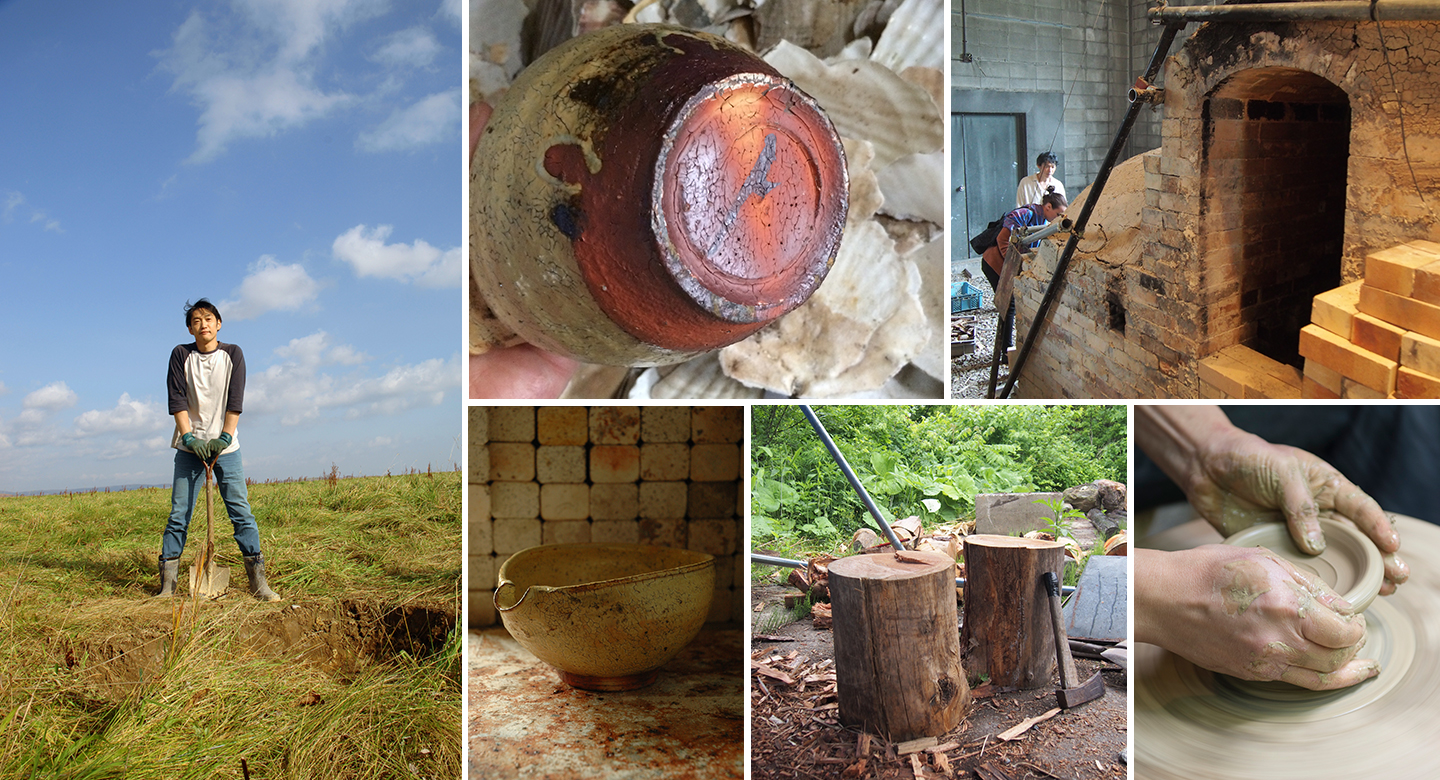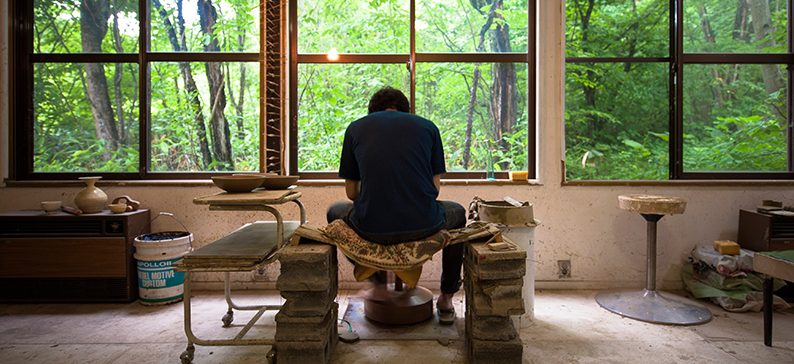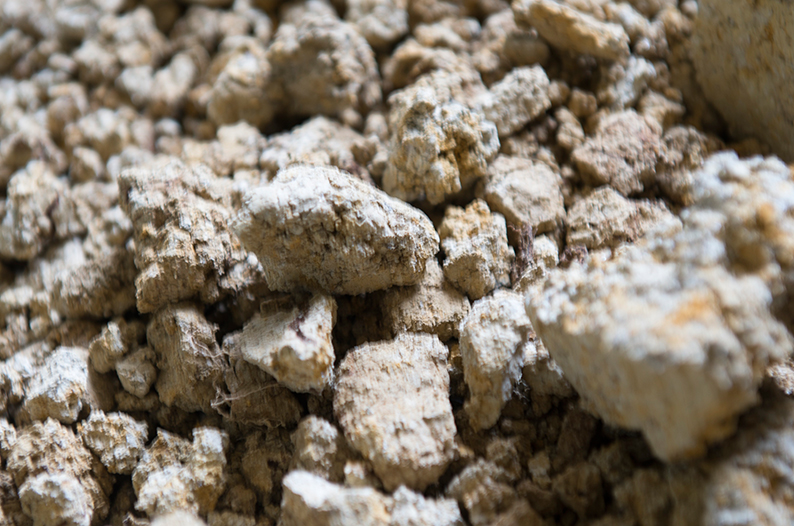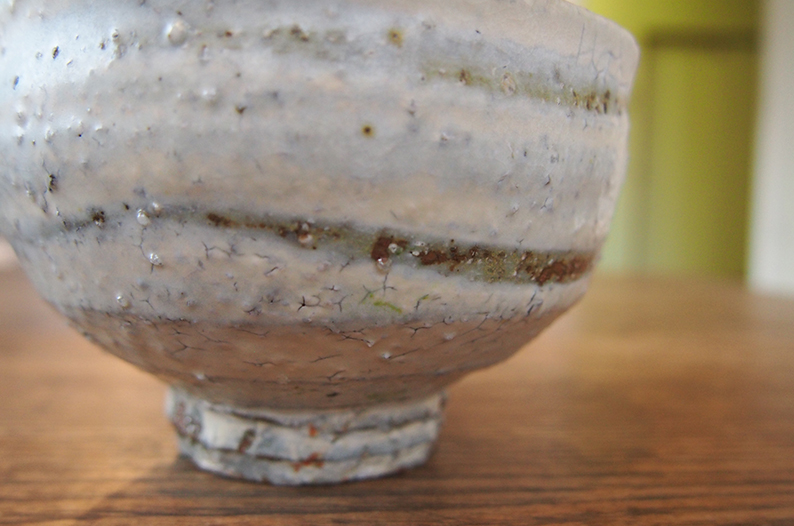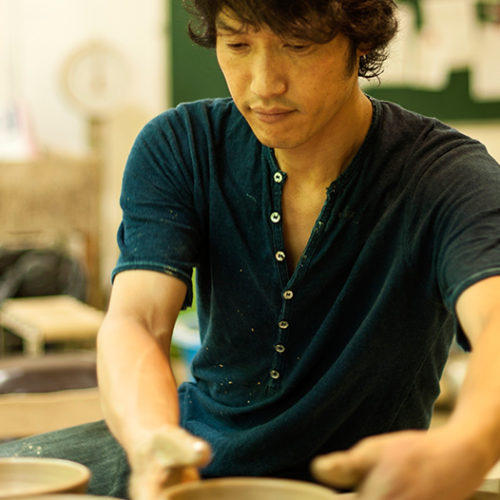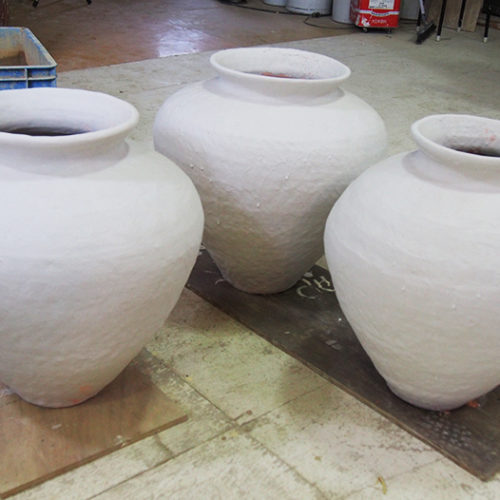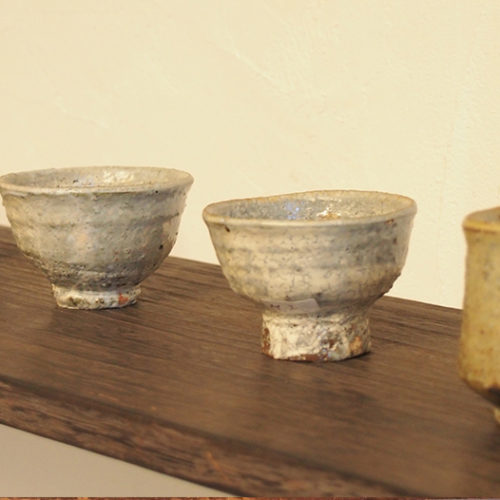Potter
-Mr.Kazuhiko Kudo-
HOKKAIDO
The Northest Pottery Kiln in Japan.
In the midst of a light rain-shower, I became lost. ‘Was Is this really the right way?’ I thought to myself as I apprehensively drove up an overgrown side street. Suddenly, it appeared. A sign atop an abandoned building read “Asahikawa Onsen”. The man who we were here to meet, potter Kazuhiko Kudo, appeared from a back door and greeted us with a smile. It was then that I realized – the workshop that we were searching for was actually an old Onsen.
“Isn’t it interesting that this was once a hot springs resort?” exclaimed Kudo as he ushered us past a selection of his own ceramics, deeper into the building. The building, which was once a public bath, is now home to a factory full of hand made kilns and grinders. From kilns that use gas and burners, not producing smoke, to those that use kerosene and burn wood, there are many different kinds of kilns in the factory. To our surprise, Kudo informed us that he made them all himself. He even digs the clay needed for his pottery himself – another testament to his dedication to the craft. But what is most clear is that he really enjoys making things here.
Starting pottery at the age of 15, Kudo has traveled to Japan’s most famous pottery production areas to experience different techniques and hone his craft. At one point, when he was both making pottery and teaching students the craft, he was asked if clay collected in Hokkaido could become Japanese ceramic ware. This was a turning point for Kudo.
Japan has various ceramics, from porcelain to Shigaraki ceramics, however the official “Japan ceramic map” does not feature Hokkaido – leading to thea general impression in Japan that Hokkaido is not a place for the creation of ceramics. Kudo thought that it would be an interesting challenge, and moved to Hokkaido, however was met with a harsh reality. It is very hard to use excavated clay in pottery, and it proved a serious challenge. However, when he found that the earth here was over 200 million years old, he became resolute to make it work and trial and error finally led to success. Since then, Kudo has been using clay from the pastures of northern Hokkaido. This this is ancient (about 45,000 years old) yellowish sand from Siberia that was deposited over the Sea of Japan. Kudo’s bowls have a faint yellow ring – made with the same yellow sand that connects them with Ancient Rome.
“Japanese porcelain is seen overseas as an interior item, not something to be used. Obviously it would be hard to use Japanese porcelain in a culture that scratches plates with knives and forks” jokes Kudo. Recently he has had more opportunities to participate in exhibitions in the U.S. and has realized the difference in needs and taste in Japan and the West. “Despite this, I want to create wares that can be used in daily life. I want people to look at my ceramics and become excited envisaging what types of food they’ll eat with them – I think that my works are only finished when they host the creations of the owner. I want people to use them freely.”
Kudo’s works are mainly cups, plates, teapots and vases – things that can easily be used in everyday life. However, despite this, they also contain elements of fine art. Kudo uses his own unique method “Kikohiki” – craftsmanship using the rhythm of a kick potter’s wheel to weave powder into the clay. The most fundamental of his works is a white ceramic bowl called “Konabiki”. Usually, clay is coated with white soil to make a white bowl, however Kudo’s bowl contains yellow sand, giving it a slightly yellow finish. More specifically To be specific, the iron content of the yellow sand makes the color change, and the type of tree and collection method of the tree used in the ash for the glaze also has an effect. The ash is made from trees such as larch, which are often found in Hokkaido, and is created made carefully over a period of time.
Fulsome and heavy, they are not crafts of the past. They are simple, yet unique, and have a sense of originality. They are the works of Kazuhiko Kudo. “I mix sand into the clay. Without it, they would be featureless and you wouldn’t be able to feel any texture.” laughed Kudo. It has been 23 years since he moved to Hokkaido. From Japan and around the world, there are increasing numbers of people who visit to learn about Kudo’s technique. “Next year, we will open a gallery and a bakery cafe, and Ii’d like to make a community space on the second floor.” Kudo shared with us his future plans as he showed us through the building, which is currently under construction.
I’ve got to continue working hard as Japan’s northernmost potter.
Kazuhiko Kudo, Japan’s northern pottery pioneer.
He is currently preparing for an exhibition in New York this August.
By Aiko Goto
July 28, 2016
Potter -Mr.Kazuhiko Kudo- information
Address
2857-46, Higashiyama, Asahikawa-shi, Hokkaido
TEL:090-6211-1797
http://kazuhiko-kudo.com/
- TOPCOLUMNPotter -Mr.Kazuhiko Kudo-
- TOPDESTINATIONSHOKKAIDOPotter -Mr.Kazuhiko Kudo-
